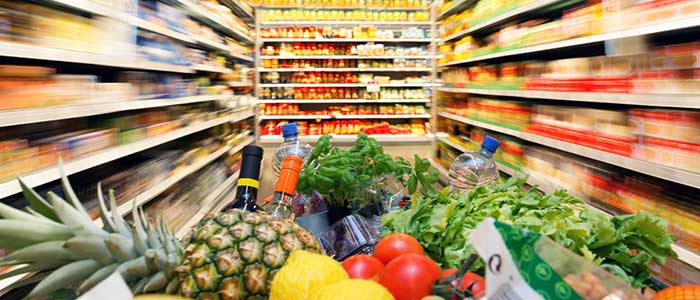 Growing up in Russia, I never had any confusion about food. I was encouraged to clean my plate. Bread, meat and starches were staples. Every meal was made from scratch every day. Salads (and almost everything else) were consumed with sour cream or mayo. I always had some pocket money to buy sweets whenever I wanted. The only warning I ever heard about food was not to eat too much sugar, which I took more as a suggestion.
Growing up in Russia, I never had any confusion about food. I was encouraged to clean my plate. Bread, meat and starches were staples. Every meal was made from scratch every day. Salads (and almost everything else) were consumed with sour cream or mayo. I always had some pocket money to buy sweets whenever I wanted. The only warning I ever heard about food was not to eat too much sugar, which I took more as a suggestion.
When I came to America, the whole new world of food opened up to me. I’ve discovered fast food, boxed, frozen and microwavable meals and peanut butter. I loved that meal prep took no time at all. And it was delicious! I was surprised at first, though, that my favorite apples, potatoes, eggs, milk and other familiar ingredients didn’t taste as good, but I thought that after having two babies, my taste buds simply changed. (Later on, I discovered organic versions and everything was right with the world again).
But with time, I started to realize that not all food was created equal. I learned that some quick and easy meals had almost no natural and unprocessed ingredients in them. A health-conscious colleague of mine informed me of dangers of microwaving food. Books, magazines and public TV programs educated me about additives, chemicals and ways of raising, growing and processing our food that were not in my family’s best interest.
We got rid of the microwave, threw away any boxed, canned and frozen stuff we had in the kitchen and started reading every packaging label. We discovered rice and soy milk. No “lite,” “sugar free” or “fat free” labels were seen in our household. Those changes made sense and were easy to make.
But the more I learned, the more complicated eating healthy became. If one wanted to be healthy and stay slim and strong, food had to be fresh, local, seasonal, cruelty-free, organic and free of additives, hormones, antibiotics and preservatives. If the wrong foods were combined in one meal, you pretty much were damaging your health.
Sugar and anything white, which wasn’t cauliflower or tofu, was deadly. Bread was declared evil. All seven colors of the rainbow and all five taste attributes of food had to be present in each meal. You had to eat big breakfast (but no bigger than two handfuls), your main meal at noon and practically nothing at night, and you had to eat all that every two hours. You had to chew each bite 22 times and play classical music while eating from your best china. And you better eat in pleasant company — and only if you didn’t feel stressed; otherwise, all that food was no good to you. It was even better if everything you ate was raw (including meat and fish), accompanied by some seaweed, exotic herbs, spices and “super food” of the week while drinking eight to ten glasses of spring water.
And then it snowballed from there, with more and more “no-nos” and “musts!”I started to feel that if I didn’t obey all these rules, I would slowly but surely be digging my own grave every time I took a bite. Food wasn’t enjoyable anymore, since it was impossible and quite expensive to do everything according to experts.
It took years of listening to my body and carefully observing myself to realize what it means to me — and only me — to eat healthy. I’ve come full circle. I eat when I’m hungry and what I’m hungry for. I eat as much fresh, organic and seasonal as possible. I bake my own bread and indulge in sweets when I feel like it. I enjoy white rice and can’t stomach (pun intended) kale. I’m grateful for all the information I now have, but I choose what to use in my everyday life and what to discard to stay healthy, happy and sane.












